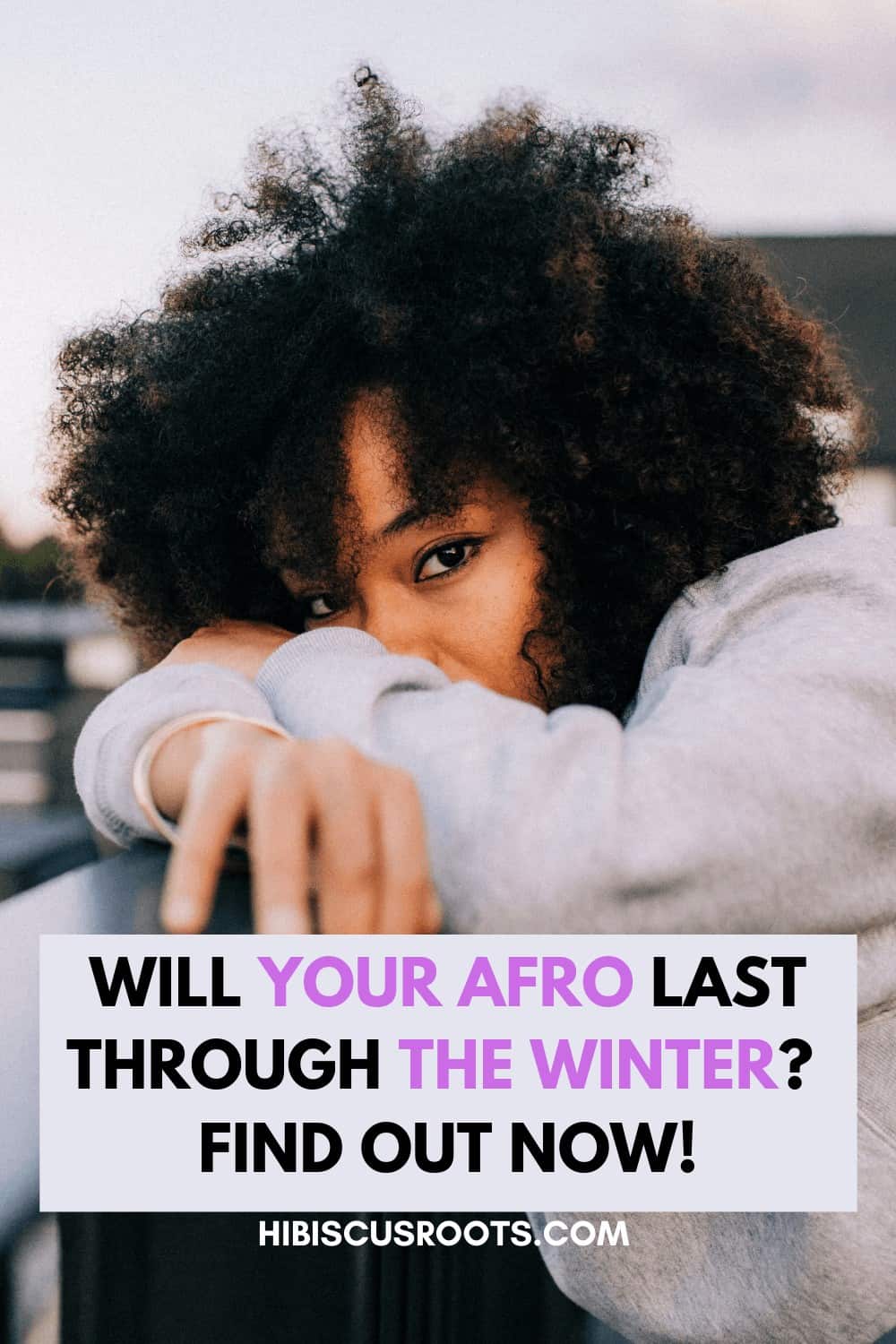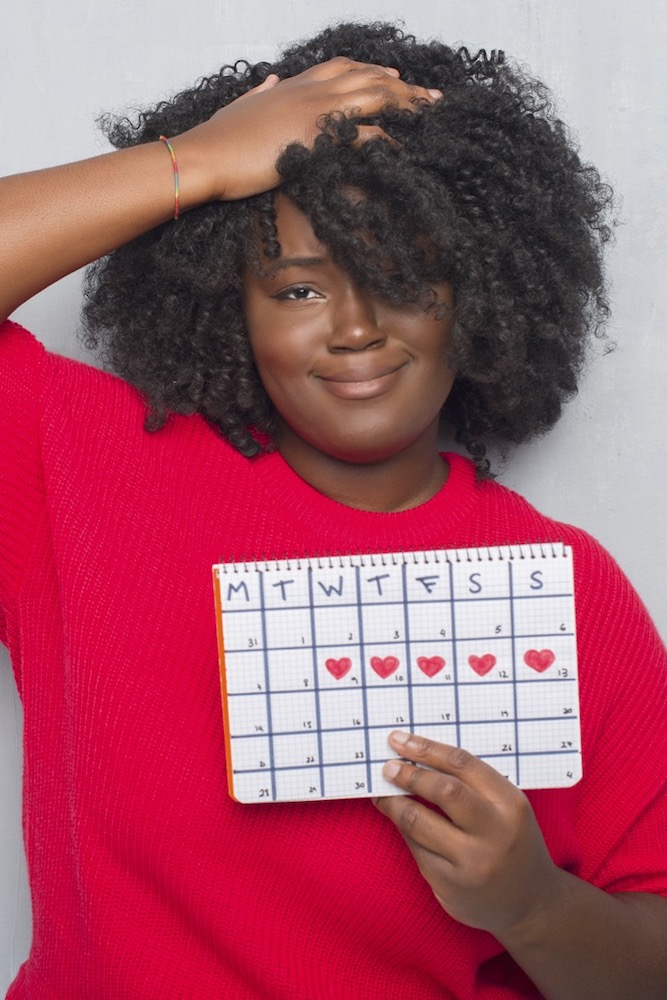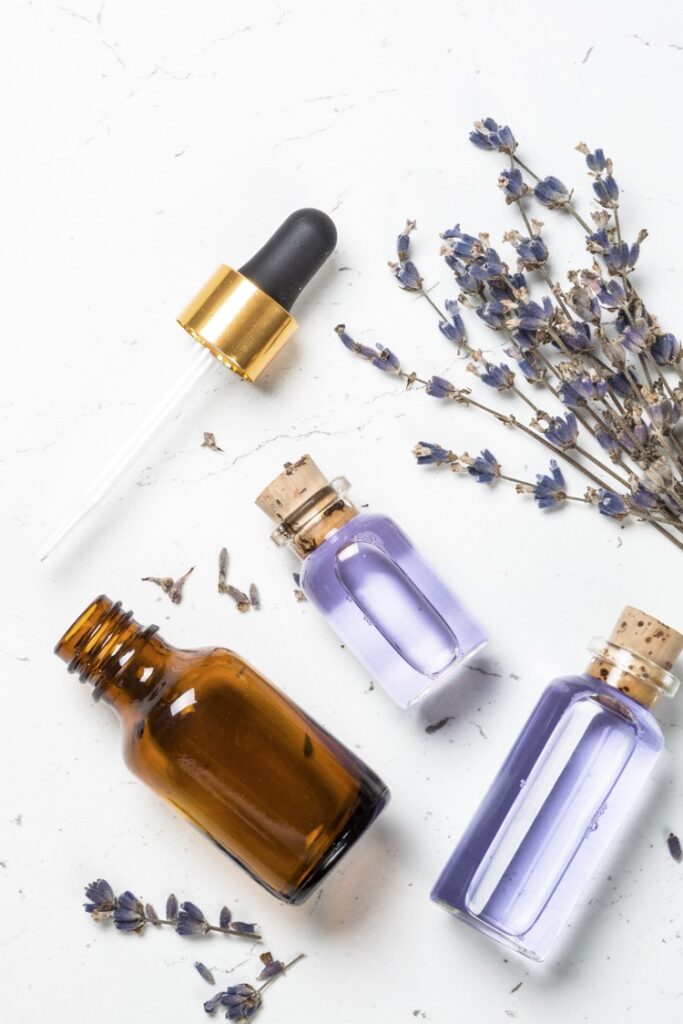Updated: October 22, 2023
In this article, we’re going to be covering the various options you have when it comes to taking care of natural (especially 4c hair) in the fall and winter seasons. You don’t just have to tuck your hair into a protective style if you don’t want to!
Since the summer is over and colder months are approaching, we’re going to be going through a lot of changes.
One of these changes will be the way we take care of our natural hair throughout the winter.
What I have found is that as naturals, we seem to have a love-hate relationship with winter.
We like that our hairstyles seem to look better and last longer because the air is less humid and causes less frizz.
However, it also means that we don’t get to wear these frizz-free hairstyles as often because of how dry and damaging the cold air can be to our scalps and hair strands.
As a result, a lot of us either tuck our hair away for the entire period or suffer major setbacks during the winter.
Here are all the steps you can take to keep your natural hair protected during the winter!

How to Take Care of Natural Hair this Winter
1. Don’t skimp on the butters
Now is the time to go get out your stash of shea butter. Besides the fact that shea butter is naturally moisturizing, and protects the hair and scalp from environmental and UV damage, shea butter is thick!
The fact that it’s a butter means that it literally forms a protective barrier around your hair strand locking in the water (moisture) and oils you applied to your hair for longer.
Even if you prefer mango butter, cocoa butter, or avocado butter, the effects are the same. Reach for the rich butters and creams in the winter to keep your hair happy. Especially if your hair is coarse or thick!
2. Pay extra attention to moisture levels
So this tip goes in line with the previous one. In the winter, one of the biggest natural hair concerns is moisture loss.
The science behind can be broken down like this: Water goes where it is not.
So in the winter, when the air is drier, it literally sucks the moisture right from your hair! Basically, even if you followed the step above and locked the moisture in with a heavy butter, you might still find that your hair gets dry anyways!
You shouldn’t ignore this!
I know you put in the work to do your LOC or LCO method and moisturize your hair. I know it makes no sense that your hair should be dry again. Well, it is — so moisturize it again! This is what we mean when we say “Listen to your hair.”
3. Deep condition your hair more often
I guess at this point, we could summarise this article by saying “moisturize your hair.”
But I can’t stress how important this is, especially in the winter.
Deep conditioning involves applying product to your hair and letting it sit on the surface of the hair for an extended period of time.
This is usually done right after a wash when the hair cuticle is most open and receptive to the product. We do this to have the moisture penetrate the hair strands as deeply as possible. You can read more about deep conditioning and why it’s important for natural hair here.
4. Protective style for most of the winter
The reason a lot of people put natural hair in protective styles in the winter isn’t just out of habit. It’s another way to keep that moisture in your hair for longer and prevent it from getting dried out!
It’s also a way to keep the hair physically protected from the harsh weather, our coats, hats, scarves, and cold snow by tucking it into braids, wigs, weaves, and buns.
The most fragile part of our hair is our ends, so we do all these styles in an effort to shield the ends of our hair as much as possible.
However, we shouldn’t neglect our hair when it’s in these protective styles. You should still moisturize your hair while it is in these styles.
Wrap your hair in a silk or satin scarf to prevent the cotton in your pillow from drawing out the moisture from your hair while you sleep.
Clean your scalp when it gets dirty in a protective style to prevent product build-up from clogging your scalp.
Read Also:
- 17 Iconic Protective Styles for Natural Hair!
- 13 Best Ways to Care for Natural Hair Before, During, & After Braids!
5. Observe how humectants affect your hair
As I said in the second point above, water goes where it is not. This is important to note because of how certain ingredients are designed to work in products.
Glycerin, for example, is a humectant.
Humectants give products hydrophilic properties (i.e. they draw moisture towards them). This is a great thing if there is more moisture in the environment than there is in your hair. In this case, the humectant would draw the moisture from the environment into your hair.
In the winter (colder months) however, the air is likely to have less moisture than your hair. Especially if you moisturize your hair well!
So when the humectant in your product does its job by drawing moisture towards it; it would be drawing the moisture from within your hair, towards the surface.
This often explains why you may feel like you moisturize your hair all the time and it still feels dry.
We talk even more about how to read product ingredients in this post. Common humectants include glycerin, propylene glycol, sodium lactate, sodium PCA, agave nectar, honey, glucose, fructose, sorbitol (aka sugar and fruit sugars). Watch out for these on your product ingredient labels!
6. Observe how coconut oil affects your hair
Coconut oil as we know, is solid at room temperature. In the winter, this quality is even more notable. As such, sealing moisture in with coconut oil might not be such a great idea.
Your hair might become hard, and as a result, more prone to breakage. So if you’ve been moisturizing and sealing your hair with coconut oil, and wondering why your hair feels heavy and stiff in the colder months – this might be why!
Try swapping coconut oil out for some avocado oil or jojoba oil, at least while temperatures are low, to see if your hair improves!
7. Handle your hair with extra care
In the winter, your hair is at its most fragile. Especially when wet!
This is important to note when you need to wash, detangle, and manipulate your hair. Because of how cold it is, and how much drier your hair is likely to be, it is generally more prone to breakage and shedding.
To prevent this, you may need to incorporate more tea rinses and other practices we recommend to combat thinning and breakage, especially at the hairline.
Following the principles of Ayurveda and balance, we just need to learn to be ready to adapt.
The fact that you already have a set natural hair regimen that works for you, doesn’t mean it has to be set in stone. You can simply replace certain products or ingredients that work better for your hair in the summer than in winter, protect your hair more, and be more attentive to your hair’s response!
Our hair is unique, and so is the hair care that is required to make sure that it thrives!
Read Next: 9 Chemical-Free Ways to Grow 4C Natural Hair RIGHT NOW!



